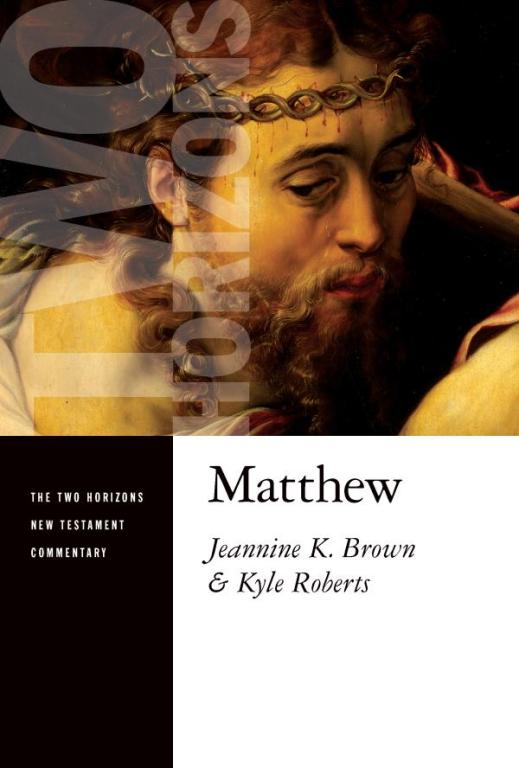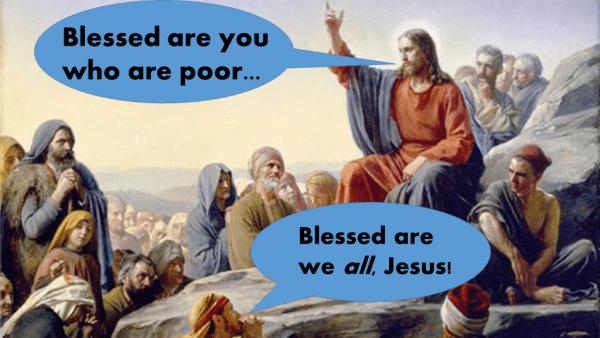Pastors and teachers, you’re busy, you’re over-loaded with meetings, budgets, and putting out little or big fires that keep popping up. You’d love to spend all day reading commentaries, preparing the perfect sermon.

But you just don’t have the time to pour through commentary after commentary, and then hop online to find the fitting illustration or application point.
May I commend to you the “Teach the Text” commentary series by Baker Academic? Scholars have done the academic work, they’ve already poured through the commentaries, and they’ve also thought the text all the way through to application points, with a few potential illustrations for your sermon.
For a good example, I’ve copied below a segment from Jeannine Brown’s “Teach the Text” volume on Matthew. The segment is Matthew 24:36-25:13, which she titles, “Being Prepared for Jesus’ Return.” After her focused exegesis of the text (appropriately headlined, “Understanding the Text”) she turns to the segment, “Teaching the Text” and “Illustrating the Text”:
Teaching the Text
The following themes arising from this passage would be profitable for teaching and preaching:
1. Jesus’ return at the end of the age will not be preceded by signs indicating its arrival. The refrain of this passage is the unanticipated timing of the return of the Son of Man (24:36–41, 42–44, 50; 25:5). In contrast to the temple’s destruction, which will have warning signs (23:4–35), Jesus’ return will come unexpectedly. Given this clear theme, it is ironic that many preachers and teachers offer so much theological rumination on Jesus’ return and spend considerable time and energy delineating the signs that will precede his coming. Some of the confusion comes from applying Matthew’s precursor signs for the fall of the temple (70 CE) to Jesus’ final return. Yet Jesus’ teachings about his parousia emphasize its unexpected timing and delay (24:48; 25:5, 19).
And why do we see in certain circles an obsession with end-time events? There seems to be a sense of comfort that many derive from eschatological timelines and charts. Perhaps they give the illusion of having control over what we perceive as disturbing, unpredictable events. If we could just map out how and when Jesus will return, we will be ready. In Matthew 24–25, however, Jesus calls his followers to be ready at all times, since no one knows the day or hour of his return (24:36; 25:13). Timing and knowledge about his return are not something that we can obtain; knowledge of the timing was even outside of Jesus’ purview (24:36). Thus, looking forward, anticipating Jesus’ return, is a matter of trust—Matthew’s answer to so many issues of the Christian life. And it is a matter of staying alert. These are themes that will preach.
2. Jesus’ parables stress being watchful and faithful at all times so that his followers will be ready for his return. The theme of readiness pervades this passage. The way to be ready is to faithfully live out one’s calling (e.g., servant’s assigned tasks in 24:46; keeping lamps lit in 25:4). For Matthew, the person who is living faithfully need not worry about the unexpected timing of Jesus’ return. Thus, Matthew’s teaching, with its analogy to a thief in the night or a bridegroom arriving later than expected, is not meant to cause fear or obsession about the timing of Jesus’ return in the future (which cannot be predicted). Instead, Matthew’s teaching about the end actually focuses on faithful living in the present. Matthew might be a good standard for our own teaching about Jesus’ second coming. Does our preaching and teaching cause people to reflect on their own present way of living out faithfulness to Jesus’ teachings? Or do we distract their attention toward speculation and generate fearfulness of “the end”? These words from 1 Peter focus on proper attentiveness and positive hope (not fear), as we look ahead to Jesus’ return: “With minds that are alert and fully sober, set your hope on the grace to be brought to you when Jesus Christ is revealed at his coming” (1 Pet. 1:13).
Illustrating the Text
Jesus’ return at the end of the age will not be preceded by signs indicating its arrival. News: Jesus made it clear that we will not know the day or the hour of his return, yet Christian history is filled with examples of people who miss this point. In the last two centuries alone entire movements have coalesced around teachers who confidently asserted they knew the day and time. William Miller was sure that Jesus would return before 1843. Alternately, some are convinced that the formation of Israel in 1948 lit the fuse for a coming tribulation. In 2011 Harold Camping predicted that the world would end on May 21. When that date came and went, he revised the date to October 21, 2011. Perhaps it is safest to remember Jesus’ words that people will not be able to anticipate the arrival of the final day by its alignment with other events. Readiness, as a result, is the best course of action.
Quote: Calvin Miller, in his fictional book The Philippian Fragment, purports to have discovered a letter from Eusebius of Philippi, a young pastor, filled with his reflections on church issues that mirror contemporary church life. At one point, Eusebius introduces a debate raging in “scroll study” about the timing of Jesus’ return. Phoebe, one of the women in the study, is put in the position of casting the deciding vote on the issue. She agonizes over it as other study members “bring their parchment charts on the final signs of the times.” Yet Eusebius finds her one afternoon visiting lepers rather than attending scroll study.“Phoebe,” I blurted out. “Don’t you care? Is our Lord coming back before or after the tribulation? When he comes back, where do you want to be found—in this state of indecision or at the Second Coming study?”
“This is where I want to be found,” she said, pointing to a circle of low, thatched huts. A little boy came running up to us from the compound. His face was badly blighted and part of his hand was gone.
“When do you think the Lord is coming back, my child?” asked Phoebe. A single tear ran down across his cheek. I handed her a bandage and couldn’t remember why I thought the question was so important.”
In short, this commentary series gives the busy pastor an “all-in-one” approach to sermon preparation. You likely won’t want to stop there in your research, but you probably could if you had to. The authors are trusted guides through the text and while–though you surely won’t agree with all the their theology and interpretations–you’ll find there useful suggestions for mapping out your material. At the very least, as with any commentary, they give you a good conversation partner.
Also, check out Jeannine’s website, where she posts other bits from her commentary and other projects (Jeannine and I are also finally completing a co-authored, theology-biblical studies integrative commentary on Matthew).















